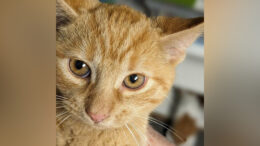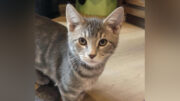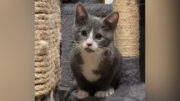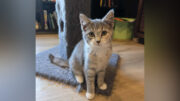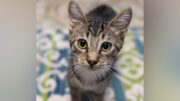This article discusses the beneficial pollinators that overwinter in the garden and best practices for providing habitat for them. As the days get shorter and the temperatures head toward freezing, many people fall back on a routine of “putting their gardens to bed”—clearcutting all herbaceous material, blowing every loose leaf and twig out of the garden, and for those with a patrician garden aesthetic, spreading a nice blanket of chocolate brown manure over each bed. While such perfection holds great appeal to the humans looking out into the garden from the warmth of their homes, pollinators view such a garden less favorably. Doug Tallamy’s seminal work in backyard ecology, the book Bringing Nature Home, implored gardeners to think about how their landscapes are viewed by the bugs and birds that rely on plants for survival.
Three-fourths of the world’s flowering plants and one-third of our food supplies depend on pollination. Pollinators need plants year-round. The succession of flowers throughout the seasons provide nectar, eggs are laid on host plants ensuring reproductive survival, plants and debris left in the garden serve as safe places for pollinators to overwinter. By planting a variety of native flowering species, and leaving them to stand in our winter gardens, we greatly add to the diversity and abundance of pollinators. A few of the pollinators that would welcome a stay in your “messy” winter garden include:
Butterflies and Moths
Mourning cloak (Nymphalis antiopa), comma (Polygonia c-album), and question mark (Polygonia interrogationis) butterflies find a crevice or a snug piece of bark or a dried leaf to nestle under until spring. These species have evolved the capability to produce an anti-freezing agent which stops ice-crystals forming in their “blood” if temperatures are below 0°C. Other species overwinter as a chrysalis. These would include some Sulphur’s (Phoebisspp.) and members of the swallowtail family (Papilionidae). Hawk moths (Sphingidae) spend the winter in warm cocoons underground while cercropia moths (Hyalophora cecropia) overwinter as pupae in cocoons attached to the twigs of the trees on which they feed. And still others spend the winter as a caterpillar. Examples would be red-spotted purple (Limenitis arthemis), meadow fritillary (Boloria bellona), and viceroy (Limenitis archippus) who hibernate among the vegetation, in seed pods, in silken nests, and in rolled-up leaves. The caterpillars of some species will resume feeding during mild spells. In most such species, caterpillars spend winter as individuals, but in some species, they overwinter in groups. Wait until spring to enjoy repeat visits of migrating monarchs (Danaus plexippus), painted ladies (Vanessa cardui ), and red admirals (Vanessa atalanta).
Bees
There are about 450 species of native bees in Pennsylvania. Some hide away for the winter in the hollow or pithy stems of native perennials and grasses. Many burrow into the ground. Most native bees are solitary and don’t have colonies. They pollinate more efficiently than honeybees and are often overlooked because they do not swarm and are not aggressive. There are many varieties of solitary bees. Blue orchard bees (Osmia lignaria) build their nests in dry hollow stems, in holes in wood or other narrow cavities. They also readily use man-made “bee-hotels.” The larvae pupate in late summer and after emergence from the pupal stage, the young adults spend autumn and winter in an unanimated state, known as diapause, inside their nest cells. Leaf cutter bees (Megachilespp.) are also cavity nesters.
Flies
Hoverflies either hide in the soil as fully-grown larvae, in leaf litter, or they hibernate as adults in sheltered places such as the nooks and crannies of old trees. Hoverflies overwintering as adults are the ones you see flying around on the first warm days in spring, searching for aphid-infested plants to lay their eggs on, as the larvae of most hoverflies are voracious consumers of aphids.
Beetles
There are more than 400 ladybug beetle species in North America. They love to feast on aphids. Each one can eat a dozen insects a day. The alien species often get into our homes to overwinter and become pests. However, the native species only winter outside, under rocks, in hollow logs, and under leaves. Wasps, ants, and midges are other useful pollinators. Do Mother Nature a favor and procrastinate on cleaning your flower beds until April. The pollinators we depend on will be well-rested after their stay in your garden and be ready to emerge and do their jobs again.
Authors
Dianne Machesney
Master Gardener
Allegheny County


















